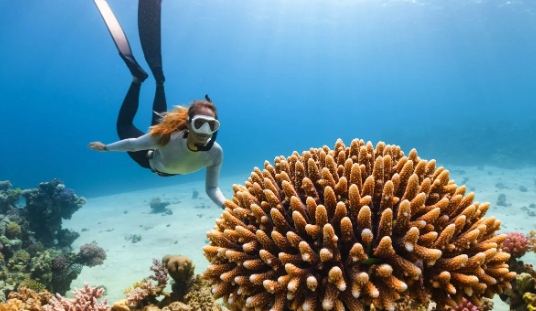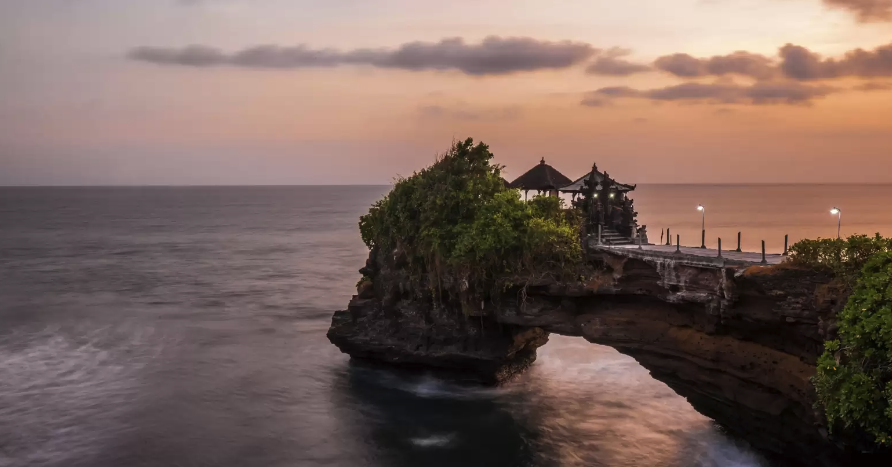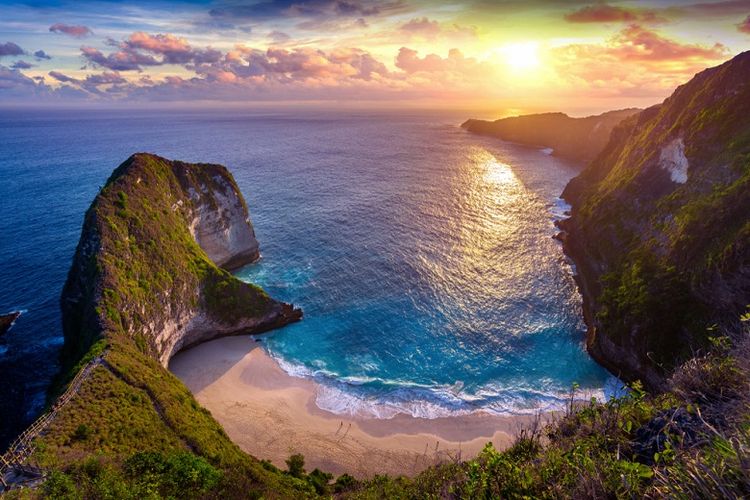Snorkeling Nusa Lembongan: The Complete First-Timer’s Guide
You lean over the boat’s edge and catch a glimpse of shimmering turquoise below. A sea turtle drifts lazily past coral gardens, while sunlight dances on the reef.
That’s snorkeling in Nusa Lembongan — an unforgettable slice of Bali’s underwater world that feels worlds away from the mainland crowds.
Only 30 minutes by fast boat from Sanur, this small island (just 8 km²) offers some of Indonesia’s clearest waters and most accessible coral ecosystems. Whether you’re new to snorkeling or already hooked, Lembongan delivers easy reef access, world-class visibility, and a calm island vibe.
1. Why Nusa Lembongan Is Bali’s Snorkeling Paradise
Unlike busier dive spots around southern Bali, Nusa Lembongan’s reefs remain vibrant and relatively untouched. The surrounding Nusa Penida Marine Park, established in 2010, protects more than 20 square km of coral reefs and over 296 fish species (Bali Marine Conservation Data, 2023).
The island’s calm northern coastline is perfect for beginners, while nearby Nusa Penida and Ceningan Channel offer thrilling drifts for confident swimmers.
Visibility averages 15–30 meters year-round, making it a dream for underwater photographers.
💬 “Lembongan’s reefs are Bali’s hidden gem — easily reached, yet still alive with color,” says Made Suardika, local guide and marine conservation volunteer.
2. The Underwater Magic: What You’ll See
Coral Reefs and Marine Biodiversity
Expect kaleidoscopic soft corals, clownfish, butterflyfish, and parrotfish swirling through the currents. The island’s northern reefs (Mangrove Point) are particularly healthy, thanks to consistent tidal flushing.
Manta Rays and Seasonal Highlights
Between April and October, plankton blooms attract reef and giant manta rays to nearby Manta Point. Spotting one glide beneath you — wings spanning up to 5 meters — is the highlight of any trip.
Occasionally, snorkelers even glimpse the elusive mola mola (sunfish) between July–September.
3. Best Snorkeling Spots Around Nusa Lembongan
| Spot | Difficulty | Highlights | Best Time |
|---|---|---|---|
| Manta Point (Nusa Penida) | Intermediate | Manta rays, deeper currents | Morning, Apr–Oct |
| Crystal Bay | Beginner | Coral gardens, reef fish | All year |
| Mangrove Point | Easy | Calm drift, soft corals | Morning |
| Toya Pakeh Channel | Moderate | Colorful walls, turtles | Dry season |
1. Manta Point
Accessible by 25-minute boat from Lembongan, this site offers manta encounters year-round. Conditions can be choppy — wear a life vest and follow your guide’s briefing.
2. Crystal Bay
True to its name, Crystal Bay boasts crystal-clear 30 m visibility and gentle waves. Schools of reef fish and small turtles are common, making it ideal for beginners.
3. Mangrove Point
Located off Lembongan’s northeast coast, Mangrove Point offers calm drift snorkeling over colorful coral gardens. Boats anchor nearby, letting you float gently with the current.
4. Toya Pakeh Channel
A favorite among experienced snorkelers, Toya Pakeh offers stronger currents but richer coral density. On lucky days, you might see eagle rays or large trevallies hunting along the wall.
4. How to Get There and Plan Your Trip
Transport Options from Bali
-
Fast boats from Sanur Beach run every hour (30–40 minutes, USD 15–25 return).
-
Public ferries from Padangbai are cheaper but slower (90 minutes).
Once on the island, most hotels offer pickup and boat transfers to snorkeling spots.
Tour Packages & Boat Costs
Typical half-day tours include 3 snorkel sites, equipment, and drinks, starting at USD 25–35 per person.
Private charters for small groups range USD 80–120, depending on duration.
Recommended local operators:
-
Manta Snorkeling Trip Lembongan (source)
-
Blue Corner Dive Lembongan
🌊 Expert Tip: Always check sea conditions before booking. Strong currents sometimes close Manta Point for safety.
5. Tips for Safe and Responsible Snorkeling
Gear, Conditions, and Eco-Etiquette
-
Wear reef-safe sunscreen to protect coral health.
-
Use fins — they conserve energy in currents.
-
Never touch or step on coral. Even gentle contact can kill polyps.
-
Respect marine life — no chasing turtles or manta rays.
-
Check weather forecasts; waves and visibility can change quickly.
Bring a GoPro with a red filter or underwater camera for the best photo clarity. Visibility peaks around 9 a.m.–1 p.m.
6. Where to Stay Near Nusa Lembongan’s Snorkeling Areas
| Accommodation | Location | Price Range (USD) | Why Stay Here |
|---|---|---|---|
| Lembongan Beach Club & Resort | Jungutbatu Beach | $150–250 | Beachfront luxury, direct tour pickups |
| Mushroom Bay Bungalows | Mushroom Bay | $70–120 | Family-friendly, calm waters nearby |
| D’Nusa Beach Club Hotel & Resort | Jungutbatu | $100–180 | Pool, spa, easy boat access |
| Dream Beach Huts | Dream Beach | $60–100 | Ocean-view chalets, romantic stay |
💡 Planning a cultural day after snorkeling? Visit Ubud Art Market — just two hours from Sanur port — for crafts and souvenirs before flying home.
7. Final Thoughts – Dive Into Bali’s Blue Side
Snorkeling in Nusa Lembongan captures what every traveler dreams of: turquoise clarity, gentle drift currents, and marine encounters straight out of a documentary.
It’s accessible enough for beginners yet rewarding for seasoned adventurers.
Whether you glide beside a manta ray at dawn or float over pastel corals in the afternoon sun, you’ll understand why this small island remains Bali’s best-kept underwater secret.
👉 Ready to explore? Compare top snorkeling tours and eco-friendly packages through local operators or your hotel concierge — and let Bali’s blue world welcome you beneath the waves.
FAQ – Snorkeling Nusa Lembongan
1. Do I need diving experience to snorkel in Nusa Lembongan?
No — most tours are beginner-friendly and provide life vests and guides for safety.
2. What’s the best month for snorkeling?
April–October offers calm seas and the best visibility. Avoid January–February due to rainfall.
3. Can I see manta rays while snorkeling?
Yes! Head to Manta Point or Manta Bay in the dry season. Early morning tours increase your chances.
4. How deep are the reefs?
Most reefs range from 2–10 meters, easily visible from the surface.
5. Are snorkeling tours safe for kids?
Yes. Many operators accept children 6 years + with mandatory life vests and close supervision.




